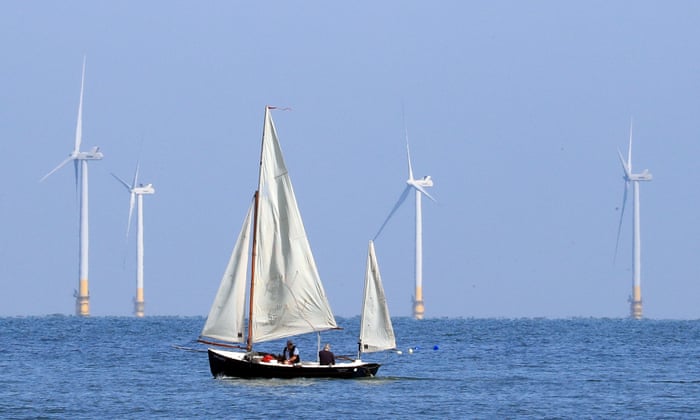Supplies from turbines will prove to be the next great energy revolution, IEA predicts

A sailing boat passes the Kentish Flats offshore windfarm. Photograph: Gareth Fuller/PA
Erecting wind turbines on the world’s best offshore sites could provide more than enough clean energy to meet global electricity demand, according to a report.
A detailed study of the world’s coastlines has found that offshore windfarms alone could provide more electricity than the world needs – even if they are only built in windy regions in shallow waters near the shore.
Analysis by the International Energy Agency (IEA) revealed that if windfarms were built across all useable sites which are no further than 60km (37 miles) off the coast, and where coastal waters are no deeper than 60 metres, they could generate 36,000 terawatt hours of renewable electricity a year. This would easily meeting the current global demand for electricity of 23,000 terawatt hours.
“Offshore wind currently provides just 0.3% of global power generation, but its potential is vast,” the IEA’s executive director, Fatih Birol, said.
The study predicts offshore wind generation will grow 15-fold to emerge as a $1tn (£780bn) industry in the next 20 years and will prove to be the next great energy revolution.
The IEA said earlier this week that global supplies of renewable electricity were growing faster than expected and could expand by 50% in the next five years, driven by a resurgence in solar energy. Offshore wind power would drive the world’s growth in clean power due to plummeting costs and new technological breakthroughs, including turbines close to the height of the Eiffel Tower and floating installations that can harness wind speeds further from the coast.
The next generation of floating turbines capable of operating further from the shore could generate enough energy to meet the world’s total electricity demand 11 times over in 2040, according to IEA estimates.

